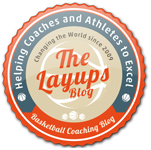You know, I really love when our young players ask good questions. It’s good to see that they are curious to acquire knowledge about the game and all things involved with it. The other day a girl from our U13 team asked me: “Eitel, since my last practice session I have sore muscles. Why is that and how can help it?”
She is a clever girl and I knew that she wouldn’t stop questioning until I gave her an understandable answer, so in this article I’ll explain briefly why and how sore muscles occur and how to treat it.
Before I go into detail, I’ll start off with a positive note: In most cases sore muscles do not take long to regenerate, usually not longer than four or five days. Sore muscles appear through excessive or long strain on your muscles. This results in tiny fissures in the muscle tissue, which cause small inflammation and swelling of the affected body parts. Usually this feels like you are stretching your muscle too much and it feels uncomfortable.
Usually sore muscles appear between 12 and 24 hours after the strain and the high muscle tension prevents regular movement of the affected muscles or groups of muscles. With the inflammation and swelling the pain increases, but at the same time the regeneration process begins and you should be doing fine within a couple of days. If you do not feel significantly better after four or five days, then immediately contact your doctor!
How can I prevent Sore Muscles?
This is a good question, and if you ask around, you will hear different methods. In my opinion there are three key points you should take into consideration:
1. Start slowly, Young One!
Especially if you are working out on your own, make sure you have professional guidance and a proper workout or practice plan. Sore muscles in a minor degree are totally normal. Every athlete has this, but rule-of-thumb is, that you shouldn’t increase your scope and intensity of your workouts by more than 10% at a time. Let your body adjust to the strain in a natural progression.
2. Warm up properly!
Establish a Warm-up Routine and stick to it thoroughly to get the blood into every part of the body and slowly put your joints in “workout mode.” This will effectively reduce muscle fissures and prevent over-stretching of your muscles. My players usually warm-up themselves prior to the arranged practice time by using jump ropes or by jogging. A good warm-up requires concentration and should last at least ten to fifteen minutes.
3. Drink!
Don’t underestimate the necessity of fueling your body with liquid. Studies from the University of Georgia and Vermont proved, that drinking fruits juice before and coffee after hard workout session help your body feel better. Antioxidants in the juice will help you regenerate faster and the caffeine will help to reduce pain a little.
Post-Treatment of sore muscles
Here are some thoughts on how to treat your sore muscles:
I would never advise to this, if you haven’t spoken with your doctor, but in some cases it may make sense to use a little pain treatment to normally move your body, especially if you have to work next day. Without the pain you can move better and at the same time the blood circulation is improved. Supplying your body with Magnesium helps to take the tension off the muscles.
A common method is to use special creams. They also help to support the blood circulation and help the regenerate the muscle tissue. At the same time you can slightly massage by putting on the cream, because a proper massage aids the removal of waste products via the bloodstream and the swelling decreases. Don’t forget: sore muscles are tiny fissures, so you shouldn’t go for that hard massage. Rather put slight and controlled pressure on the muscle and massage it gently! Another good thing to do is to take a hot bath after practice sessions or go to the sauna. This increases the blood flow, too.
If the pain isn’t too much, try to slowly do low-intesity sports again. Working out even if you have sore muscles can be supportive, if done reasonably. Stress hormones are injected into the blood and decrease the pain temporarily. In turn this will improve your range of motion and help your muscles regenerate. Do not overact when going back to practice. If it hurts, you should stop!
Not doing any sport at all for a couple of days can be a treatment, too. Usually the pain of the sore muscles reduces to an acceptable level within the next three days, so that you can start working out again. The good thing is, that once you’ve had sore muscles in one part of the body this will usually prevent having the same again for the next couple of weeks.
Sore muscles are a part of your workouts and the game. To stay healthy on the long run, pay attention and support your body actively in the regeneration process.
How do you treat your sore muscles? Please share your tips in the comment section below.
[info_box]Picture credit: tajai • Creative Commons Attribution[/info_box]

I really appreciated this post, especially since I’ve been exercising a lot more lately. I can see why it would be important for muscles to be properly cared for in recovery. I liked your tip to not underestimate the necessity of fueling your body with liquid. Thanks for sharing.